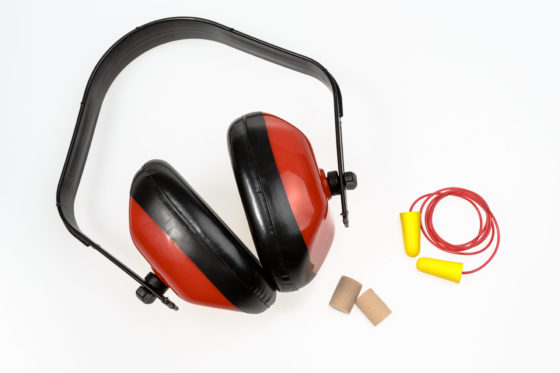Workers at recycling facilities need hearing protection and other PPE to protect against exposure to high noise levels and other hazards.

Photo caption: iStock.com/TonyLomas
This is the second post in a series about workplace hazards in the recycling industry. See the first post, Sorting out workplace safety in the waste and recycling industry.
Hearing protection is essential for workers in recycling facilities, who are surrounded by noise caused by sounds of machinery, smashing glass, and crushing metal. That’s in addition to many other types of personal protective equipment (PPE) workers are required to wear as they break down scrap metal, glass, cathode ray tubes (CRTs) from old TVs and computer monitors, and more.
“With recycling, it’s not just about exposure to hazardous chemicals,” says Geoff Clark, a senior occupational hygienist at WorkSafeBC. “You’ve got all the machinery breaking and crushing — noise is definitely an issue, and employers need to look at it more carefully.”
An employer must do a risk assessment and look at what the noise levels are. Depending on the situation, workers might need foam earplugs or ear muffs, Geoff says.
WorkSafeBC defines hazardous noise levels as being exposed to 85 decibels and up for eight hours, or the equivalent. For perspective, consider that heavy traffic at close range is around 85 decibels. (See the webpage Hearing loss prevention for more information.)
Assessing and controlling exposure risks in recycling
Employers in the recycling industry also need to assess many other risks, which may require other forms of PPE. Other important PPE includes respirators, safety gloves, protective eyewear, and face shields for protecting workers from things like broken glass or sharp metal.
Depending on the situation, workers may also need disposable coveralls, and a decontamination station. For example, workers who dismantle CRTs and electronic circuit boards risk exposure to lead, which is highly toxic and can cause severe neurological disorders and cancer.
It’s important to note that PPE is the last line of defense when it comes to controlling risks. Employers should follow the hierarchy of controls and consider what other controls to implement in addition to PPE to best protect workers. Geoff told me about one example of a workplace where workers were being exposed to lead and cadmium while dismantling batteries. To reduce exposure, the employer installed an air-extraction system — an engineering control — above their three main processing machines, along with a number of other safety measures (including PPE).
For more details about health and safety in the recycling industry, see this WorkSafeBC announcement on reducing injuries in recycling facilities.
Thanks to Geoff for answering all my questions. It’s really eye-opening to learn more about “where stuff goes” and who deals with it. I have much respect for all these workers who do such an important job.


